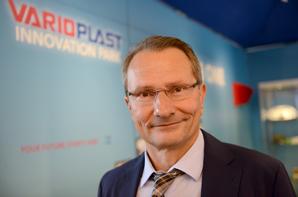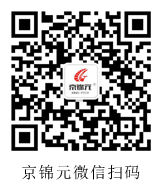David Vink
EUROPEAN PLASTICS NEWS
Published: November 18, 2014 6:00 am ET
Updated: November 18, 2014 10:13 am ET

Image By: Caroline Seidel
Recycled material on display at Varioplast's booth during Fakuma.
FRIEDRICHSHAFEN, GERMANY — With a theme of “Best-Price-Production, Germany,” injection molder Varioplast Konrad Däbritz GmbH of Ötisheim, Germany, showed its Instachrome and Instantcoat processes for decorated moldings at Fakuma in Friedrichshafen last month.
The Instantchrome process offers a more ecologically acceptable alternative to conventional Chrome 6 plating by making use of the Plasticoater equipment from Impact Coatings AB in Linköping, Sweden, to apply nanoscale Chrome 3 and other metallic coatings to plastic moldings with the PVD vapor deposition process.
Varioplast CEO Michael Dämbritz showed examples of PVD-coated moldings that obtain metal surfaces with day-and-night design by laser etching characters and symbols in the metal coated surface, followed by UV lacquering. The first serial production process starts one week after Fakuma 2014, in a clock pointer for the new Volkswagen Passat.
Däbritz said UV-resistant lacquer is used for this application, even though the pointer is behind glass, as the lacquer also acts as a hard coat to provide scratch resistance.
The Instantcoat process involved printing and spray-painting after molding, with laser etching of characters and symbols used in the Instantcoat Plus process version. This is a complex production process involving two injection molding machines, two pad-printing colors and various cutting, pressing and joining tools all linked together into a fully automatic process chain.
Varioplast says Instantcoat has a typical cycle time of 30 minutes, while conventional processes need several days.
Däbritz said the process is used for instrument pointers on the Smart car. He added that Varioplast supplies spray-painted and laser-etched moldings used as day-and-night design parts on a control unit mounted on the interior roof area of the BMW Mini.

Image By: Caroline Seidel
Michael Dämbritz
A completely different and unusual process however is Varioblend, with which all sorts of bulk materials are incorporated within a plastic molding. Däbitz gave examples such as rice, corn, coffee beans, pebbles, glass beads, metals and plastics, pointing out that the materials not only create very stunning artistic visual effects, but also cut molding cycle time by absorbing heat from the plastic melt.
Däbritz said Varioplast is seeking applications for the process in furniture and more generally within the design community — whether for weight, technical or optical reasons.
Another unconventional approach has been taken with a solar collector plate in acrylic developed, produced and tested at Varioplast, which increases the solar energy yield by 10-30 percent through its rib design used to collected sunlight more efficiently at different angles as the sun moves.
Varioplast has also participated in a project with the local Pforzheim University called KIS (Konturgenaue Impulserwärmung von Spritzgießwerkzeugen), namely for close contour impulse heating on injection molding tool surfaces. The company says that, in contrast with standard injection molding tool techniques, KIS is an energy-efficient means of rapid heating with hot air applied via with special jet geometries and with various flow paths and speeds that enables better mold surface reproduction.
As with other rapid heat-and-cool (RHC) techniques. KIS prevents early melt surface freezing against relatively cool mold surfaces, so that better mold surface reproduction and elimination of visible knitlines are achieved, with no great penalty in terms of cycle time. The company says “substantial and exceptionally promising results” have already been obtained with KIS.
| 